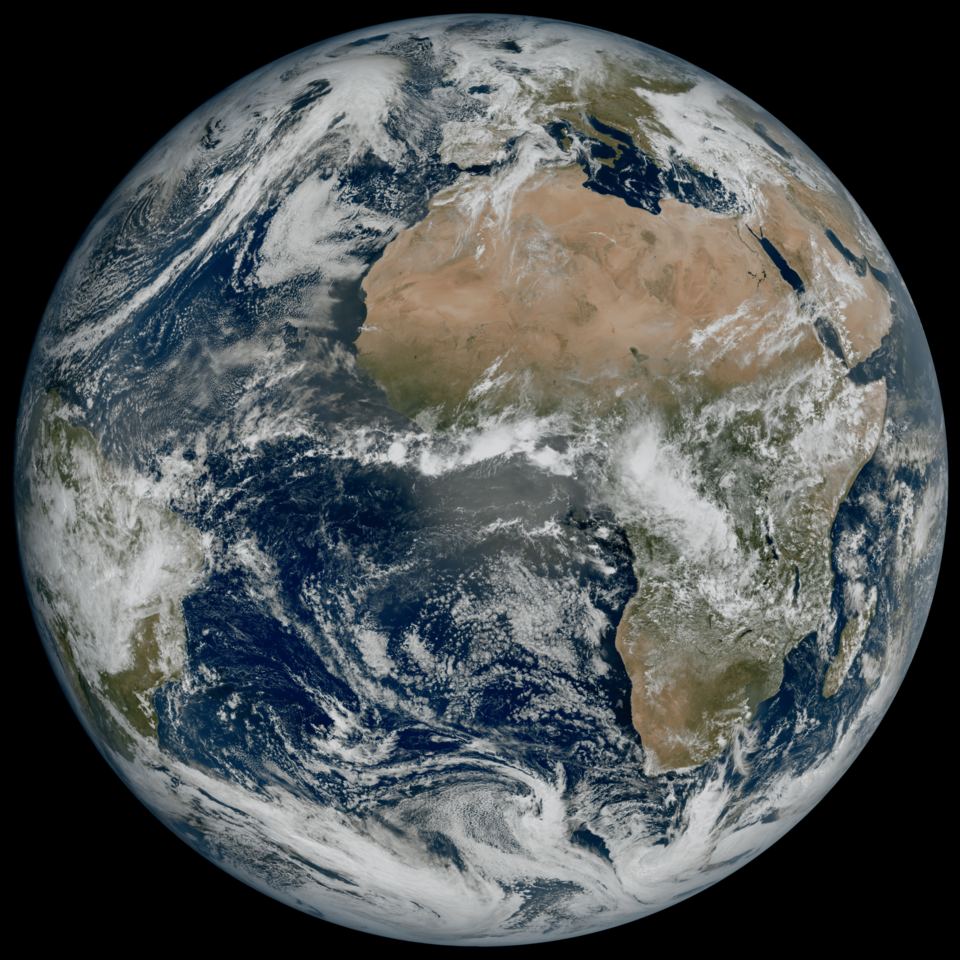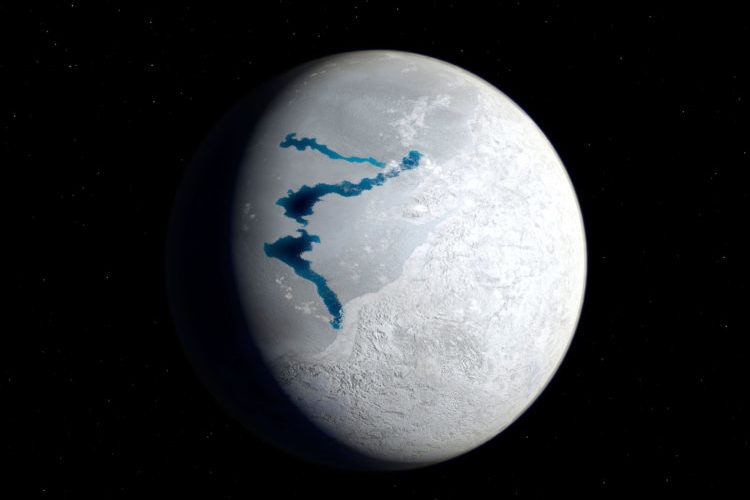On Earth, a single solar day lasts 24 hours. That is the time it takes for the Sun to return to the same place in the sky as the day before. The Moon, Earth’s only natural satellite, takes about 27 days to complete a single circuit around our planet and orbits at an average distance of 384,399 km (~238,854.5 mi). Since time immemorial, humans have kept track of the Sun, the Moon, and their sidereal and synodic periods. To the best of our knowledge, the orbital mechanics governing the Earth-Moon system have been the same, and we’ve come to take them for granted.
But there was a time when the Moon orbited significantly closer to Earth, and the average day was much shorter than today. According to a recent study by a pair o researchers from China and Germany, an average day lasted about 19 hours for one billion years during the Proterozoic Epoch – a geological period during the Precambrian that lasted from 2.5 billion years to 541 million years ago. This demonstrates that rather than gradually increasing over time (as previously thought), the length of a day on Earth remained constant for an extended period.

A full disk view of the Earth, courtesy of Meteosat-I 1. Credit: ESA/Meteosat
The study was conducted by Ross N. Mitchell, a Professor of geoscience at the CAS State Key Laboratory of Lithospheric Evolution at the Institute of Geology and Geophysics and the College of Earth and Planetary Sciences at the University of Chinese Academy of Sciences, and Uwe Kirscher, a former at the University of Tübingen, Germany, and a current Research Fellow at The Institute for Geoscience Research at Curtin University, Australia. The paper that details their research, titled “Mid-Proterozoic day length stalled by tidal resonance,” recently appeared in Nature Geosciences.
In past decades, geologists examined a special type of sedimentary rock that contains preserved layers from tidal mud flats. By counting the number of sedimentary layers caused by tidal fluctuations, they could determine the number of hours per day during previous geological periods. But such records are rare, and those examined were often disputed regarding their age. However, there is another method for estimating day length known as Cyclostratigraphy, which Mitchell and Kircher employed for their study.
This geologic method examines rhythmic sedimentary layering to detect Milankovitch cycles, which describe how changes in the eccentricity and obliquity of Earth’s orbit affect its climate over time. In recent years, there has been a proliferation in the number of Milankovitch records that deal with the ancient past. In fact, over half the data concerning ancient geological periods has been obtained in just the past seven years. This allowed Mitchell and Kircher to test a previously-unproven theory. As Kirscher explained in a recent CAS press release:
“Two Milankovitch cycles, precession and obliquity, are related to the wobble and tilt of Earth’s rotation axis in space. The faster rotation of early Earth can therefore be detected in shorter precession and obliquity cycles in the past. Because of this, if in the past these two opposite forces were to have become equal to each other, such a tidal resonance would have caused Earth’s day length to stop changing and to have remained constant for some time.”
In short, this theory posits that day length may have remained at a constant value in the past for extended periods of time rather than gradually growing longer. A key factor in this is “solar atmospheric tides,” where the “push” of charged solar particles from the Sun (aka. solar wind) is related to the heating of our atmosphere during the daytime. This is similar to how lunar tides, caused by the “pull” of the Moon’s gravity, are related to the rise and fall of ocean levels. But whereas the Moon’s gravity has slowly slowed Earth’s rotation down, the Sun was responsible for speeding it up.

Artist’s impression of Earth 650 million years ago during the Marinoan glaciation. Credit: University of St. Andrews
While solar tides are not as strong as their lunar counterpart today, this may not have always been the case. When Earth was rotating faster in the past, the influence of the Moon’s gravitational pull would have been much weaker. When Mitchell and Kirscher examined the data compilation, they noted that between two to one billion years ago, Earth’s day length appears to have stopped its long-term increase and stopped at about 19 hours. According to Mitchell, this period is alternately known as “the billion years” or the “boring billion.”
What is especially intriguing about the new result is how the “boring billion” occurred between the two largest rises in oxygen content in our atmosphere. These were the Great Oxidation Event, where photosynthetic bacteria dramatically increased the amount of oxygen in the atmosphere, and the Cryogenian period (aka. “Snowball Earth”) – a glacial period where the entire surface (or close to it) was covered in ice. If confirmed, these results indicate that the evolution of Earth’s rotation is related to the composition of its atmosphere.

The study also supports the idea that longer days were needed before photosynthetic bacteria could produce enough oxygen to reach modern atmospheric levels (24%). However, this study’s main implication is how it alters astronomers perceptions of Earth’s rotation in the past (or “paleorotation”). For a long time, it has been theorized that the Moon gradually absorbed Earth’s rotational energy, slowing the planet down, boosting the Moon into a higher orbit, and creating a 24-hour day. But these results indicate there was a break in that process between 2 billion and 1 billion years ago. As Kirscher summarized:
“Most models of Earth’s rotation predict that day length was consistently shorter and shorter going back in time. Two Milankovitch cycles, precession, and obliquity, are related to the wobble and tilt of Earth’s rotation axis in space. The faster rotation of early Earth can therefore be detected in shorter precession and obliquity cycles in the past.”





